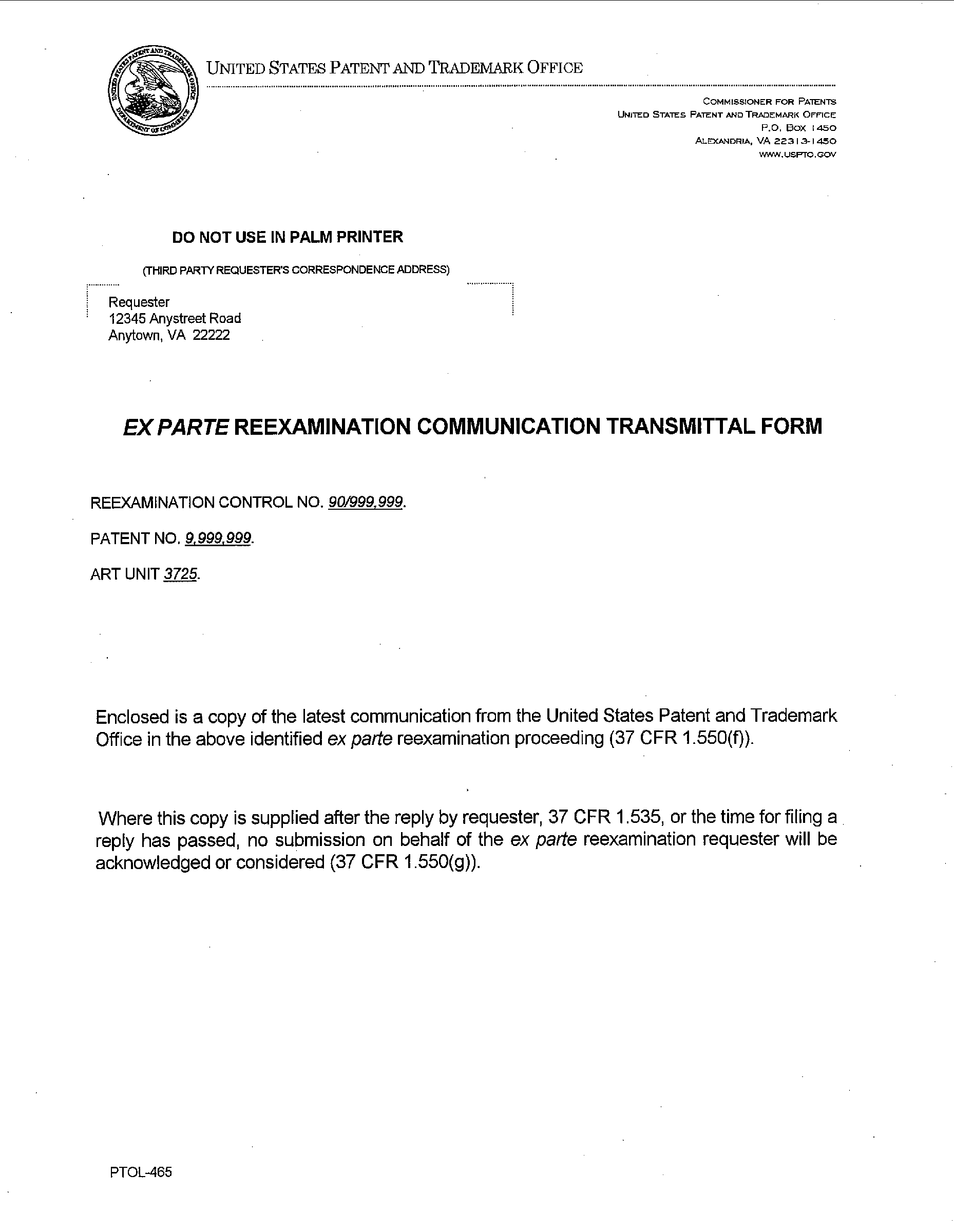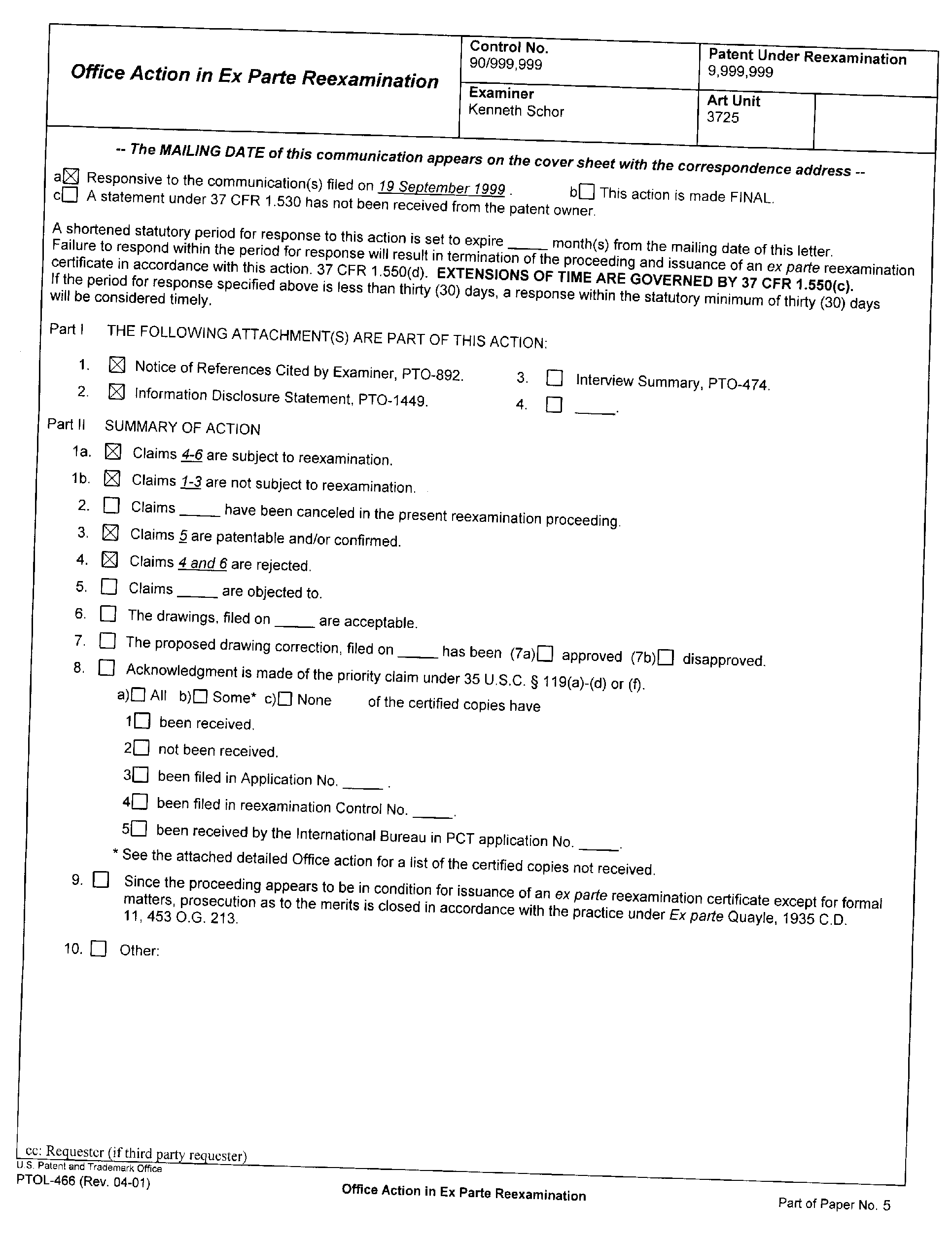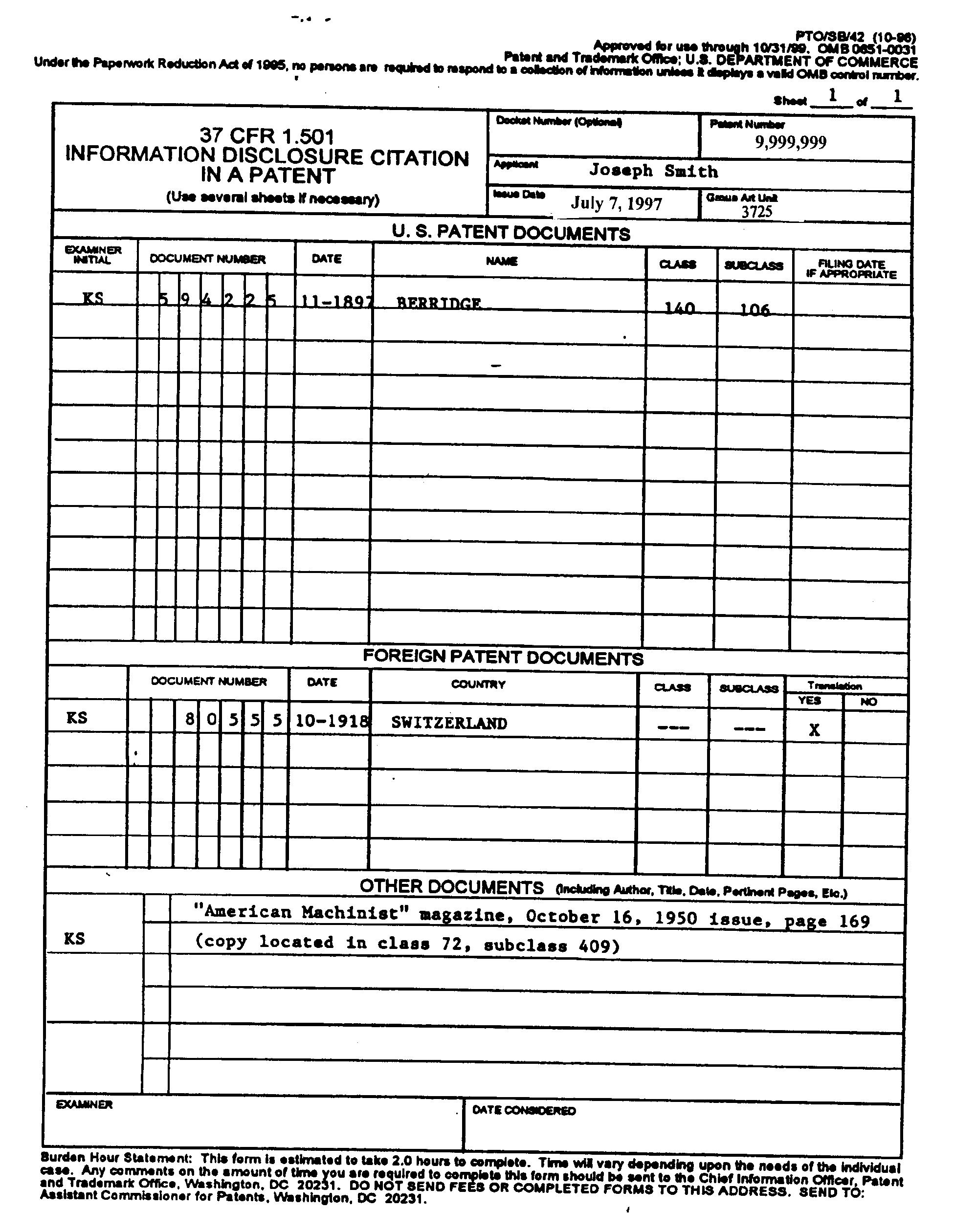Notice regarding Section 508 of the Workforce Investment Act of 1998. Section 508 of the Workforce Investment Act of 1998 requires all United States Federal Agencies with websites to make them accessible to individuals with disabilities. At this time, the MPEP files below do not meet all standards for web accessibility. Until changes can be made to make them fully accessible to individuals with disabilities, the USPTO is providing access assistance via telephone. MPEP Interim Accessibility Contact: 571-272-8813.
2262 Form and Content of Office Action [R-7] - 2200 Citation of Prior Art and Ex Parte Reexamination of Patents
2262 Form and Content of Office Action [R-7]
The examiner's first Office action will be a statement of the examiner's position and should be so complete that the second Office action can properly be made a final action. See MPEP § 2271.
All Office actions are to be typed. The first Office action must be sufficiently detailed that the pertinency and manner of applying the cited prior art to the claims is clearly set forth therein. Where the request for reexamination includes material such as a claim chart to explain a proposed rejection in order to establish the existence of a substantial new question of patentability, the examiner may cut and paste the claim chart (or other material) to incorporate it within the body of the Office action. The examiner must, however, carefully review the claim chart (or other material) to ensure that any items incorporated in a statement of the rejection clearly and completely address the patentability of the claims. For actions subsequent to the first Office action, the examiner must be careful to additionally address all patent owner responses to previous actions. If the examiner concludes in any Office action that one or more of the claims are patentable over the cited patents or printed publications, the examiner should indicate why the claim(s) is clearly patentable in a manner similar to that used to indicate reasons for allowance ( MPEP § 1302.14). If the record is clear why the claim(s) is/are clearly patentable, the examiner may refer to the particular portions of the record which clearly establish the patentability of the claim(s). The first action should also respond to the substance of each argument raised by the patent owner and requester pursuant to 37 CFR 1.510, 1.530, and 1.535. If arguments are presented which are inappropriate in reexamination, they should be treated in accordance with 37 CFR 1.552(c). It is especially important that the examiner's action in reexamination be thorough and complete in view of the finality of a reexamination proceeding and the patent owner's inability to file a continuation proceeding.
Normally, the title will not need to be changed during reexamination. If a change of the title is necessary, patent owner should be notified of the need to provide an amendment changing the title as early as possible in the prosecution as a part of an Office Action. If all of the claims are found to be patentable and a Notice of Intent to Issue Ex Parte Reexamination Certificate has been or is to be mailed, a change to the title of the invention by the examiner may only be done by a formal Examiner's Amendment. Changing the title and merely initialing the change is NOT permitted in reexamination.
>Current procedure permits the examiner, in the exercise of his or her professional judgment to indicate that a discussion with the patent owner's representative may result in agreement whereby the reexamination proceeding may be placed in condition for issuing a Notice of Intent to Issue a Reexamination Certificate (NIRC) and that the examiner will telephone the patent owner's representative within about 2 weeks. Under this practice the patent owner's representative can be adequately prepared to conduct such a discussion. Any resulting amendment may be made either by the patent owner's attorney or agent, or by the examiner in an examiner's amendment. It should be recognized that when extensive amendments are necessary, it would be preferable if the amendments were filed by the patent owner's attorney or agent of record since this will provide the file wrapper with a better record because the amendments would include the patent owner's arguments for patentability as required by 37 CFR 1.111.<
I. PANEL REVIEW CONFERENCE
After an examiner has determined that the reexamination proceeding is ready for an Office action, the examiner will formulate a draft preliminary Office action. The examiner will then inform his/her **>Central Reexamination Unit (CRU) Supervisory Patent Examiner (SPE) or Technology Center (TC) Quality Assurance Specialist (QAS)< of his/her intent to issue the Office action. The *>CRU SPE/TC QAS< will convene a panel review conference, and the conference members will review the patentability of the claim(s) pursuant to MPEP § 2271.01. If the conference confirms the examiner's preliminary decision to reject and/or allow the claims, the proposed Office action shall be issued and signed by the examiner, with the two other conferees initialing the action (as "conferee") to indicate their presence in the conference. If the conference does not confirm the examiner's treatment of the claims, the examiner will reevaluate and issue an appropriate Office action.
II. SAMPLE OFFICE ACTION
A sample of a first Office action in a reexamination proceeding is set forth below.


| Claims 1 - 3 of the Smith patent are not being reexamined in view of the final decision in the ABC Corp. v. Smith , 999 USPQ2d 99 (Fed. Cir. 1999). Claims 1 - 3 were held not valid by the Court. | |
| The following is a quotation of 35 U.S.C. 103 which forms the basis for all obviousness rejections set forth in this Office action: | |
| A patent may not be obtained though the invention is not identically disclosed or described as set forth in section 102 of this title, if the differences between the subject matter sought to be patented and the prior art are such that the subject matter as a whole would have been obvious at the time the invention was made to a person having ordinary skill in the art to which said subject matter pertains. Patentability shall not be negatived by the manner in which the invention was made. | |
|
Subject matter developed by another person, which qualifies as prior art only under one or more of subsections (f) or (g) of section 102 of this title, shall not preclude patentability under this section where the subject matter and the claimed invention were, at the time the invention was made, owned by the same person, or subject to an obligation of assignment to the same person. |
|
| Claims 4 and 6 are rejected under 35 U.S.C. 103 as being unpatentable over Berridge in view of McGee. | |
| Berridge teaches extruding a chlorinated polymer using the same extrusion structure recited in Claims 4 and 6 of the Smith patent. However, Berridge does not show supporting the extrusion barrel at 30 degrees to the horizontal, using spring supports. McGee teaches spring supporting an extrusion barrel at an angle of 25 - 35 degrees, in order to decrease imperfections in extruded chlorinated polymers. It would have been obvious to one of ordinary skill in the polymer extrusion art to support the extrusion barrel of Berridge on springs and at an angle of 30 degrees because McGee teaches this to be known in the polymer extrusion art for decreasing imperfections in extruded chlorinated polymers. | |
| Claim 5 is patentable over the prior art patents and printed publications because of the specific extrusion die used with the Claim 4 spring-supported barrel. This serves to even further reduce imperfections in the extruded chlorinated polymers and is not taught by the art of record, alone or in combination. | |
| It is noted that an issue not within the scope of reexamination proceedings has been raised. In the above-cited final Court decision, a question is raised as to the possible public use of the invention of Claim 6. This question was also raised by the requester in the reply to the owner's statement. The issue will not be considered in a reexamination proceeding (37 CFR 1.552 (c)). While this issue is not within the scope of the reexamination, the patentee is advised that it may be desirable to consider filing a reissue application provided that the patentee believes one or more claims to be partially or wholly inoperative or invalid based upon the issue. | |
| Swiss Patent 80555 and the American Machinist article are cited to show cutting and forming extruder apparatus somewhat similar to that claimed in the Smith patent. | |
| In order to ensure full consideration of any amendments, affidavits, or declarations, or other documents as evidence of patentability, such documents must be submitted in response to this Office action. Submissions after the next Office action, which is intended to be a final action, will be governed by the requirements of 37 CFR 1.116 after final rejection and 37 CFR 41.33 after appeal which will be strictly enforced. | |
| All correspondence relating to this ex parte reexamination proceeding should be directed: | |
| By Mail to: |
Mail Stop Ex Parte Reexam Attn: Central Reexamination Unit Commissioner for Patents United States Patent & Trademark Office P.O. Box 1450 Alexandria, VA 22313-1450 |
| By FAX to: |
(571) 273-9900 Central Reexamination Unit |
| By hand: |
Customer Service Window Randolph Building 401 Dulany Street Alexandria, VA 22314 |
|
Any inquiry concerning this communication should be directed to Kenneth Schor at telephone number (571) 272-0000. |
|
|
Kenneth M. Schor Kenneth M. Schor Primary Examiner > CRU < Art Unit * > 3998 < |
|
|
ARI
|
|
|
BZ
|
|
